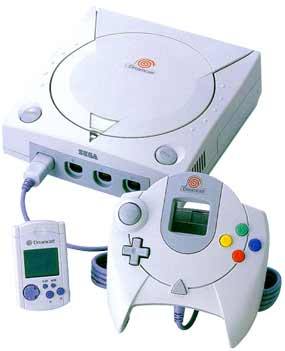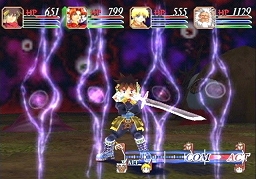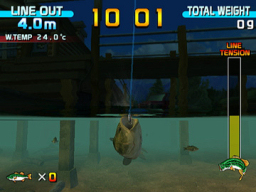Sailing the Blue Skies since 2001.


The Dreamcast is further proof that, yes, you can be too far ahead of your time.

Sega's wonderful dream-in-a-box pioneered many features that are considered standard for consoles today. Had the console survived for a couple more years, we might've seen those features more fully taken advantage of. Unfortunately, most of the world simply wasn't ready. The system quickly lost its momentum amidst fears that it was underpowered compared to Sony's Playstation 2. That doesn't mean the Dreamcast shouldn't get the credit it deserves. Here, in no particular order, are seven ways in which the Dreamcast was ahead of its time:
Online Gaming, Out-of-the-Box
It's probably the most well known of the Dreamcast's pioneering features. There were consoles before it that offered online gaming, including Sega's Saturn, but they required modems and equipment that had to be purchased separately. The Dreamcast came with a 56K modem attached to it, and a really long phone cord for convenience. Sega's own ISP, SegaNet, was even specifically tailored for optimal online gaming performance. A broadband modem was later released, but it was a little too late in the Dreamcast's short lifespan to gain much attention. Nonetheless, the ability to not only play games with other people online, but also to download extra game content and surf the internet is something the Dreamcast did before Xbox Live came along.
Console Vs. PC

On a similar note, remember when Microsoft was touting "Live Anywhere" a few years back? The idea was that people who owned the Xbox 360 version of a game could play online together with people who owned the Windows version of the same game. So, what's the big deal? Dreamcast owners were already doing this back in 2000. Quake III Arena, 4x4 Evolution and Sega Swirl all supported cross-platform online play, and in fact, it's still possible to connect to servers to play Quake and 4x4 with a Dreamcast, even today.
Console-to-Portable Connectivity

Today, we can wirelessly connect our Nintendo DS's with our Wii's, or our Sony PSP's with our Playstation 3's, to trade content or download mini-games. This idea began with Nintendo's novel GameCube-to-Game Boy Advance connectivity feature, right? Right?
Wrong! Before Nintendo heavily touted this feature on the Gamecube, it was possible to connect your Dreamcast with SNK's NeoGeo Pocket Color handheld and trade information between certain games.
Analog Shoulder Triggers
OK, so analog shoulder buttons haven't exactly evolved into a must-have feature, but still, before they were implemented on the Gamecube controller, they were already in place on the Dreamcast controller. Some might even argue that they felt better on the Dreamcast controller as well.
Progressive Scan Output

If you were lucky enough to snag Sega's VGA Box adaptor, you could play most Dreamcast games in 480p on a computer monitor or even an HDTV. In this era of high definition gaming where we expect progressive scan at the least, the Dreamcast was the console taking the early steps.
Motion Sensitive Control

In 2006, Nintendo used Wii Sports Tennis to show off its "revolutionary" motion sensitive controller. A console first? Not so fast!
Sega produced a motion sensitive fishing rod controller in 2000 that was compatible with more than just fishing games. In fact, it could be used with Virtua Tennis and its sequel, Tennis 2K2, in much the same way as the Wii Remote was with Wii Sports Tennis. Furthermore, the speed of your swing in real life affected the power of your character's swing in the game, and you could manually move your character around the court.
Not bad, eh? And I haven't even mentioned its compatibility with Soul Calibur...
Voice Recognition and Voice Chat

While voice recognition isn't too common, we've seen it used a bit on the Nintendo DS. However, Sega's Seaman came with a microphone peripheral, and it was the first console game ever to use voice recognition. On top of that, the same microphone attachment was also packaged with Alien Front Online for real time voice chat two years before Xbox Live and Sony's SOCOM: U.S. Navy SEALS implemented the feature.
Extra: System Interface - NEW!
Wait; is this an eighth way the Dreamcast was ahead of its time? Well, perhaps, but let's think of it as a 7.5 since it's just kind of a small addendum.
I caught an article at Edge Online titled "A Brief History of Console Interfaces" where author Joe Keiser pointed out the consistency between the Dreamcast's interface and its overall design. In his own words: "It's the first of the console interfaces that felt specifically and thoroughly designed at every level--yet another way the system was ahead of its time." No, I did not add that last part. He actually wrote it, which is what made me want to mention it here.
And there you have it! Next time you fire up your latest game console for some online play; or marvel at crystal clear, high definition graphics; or pick up that Wii Remote for gesture-based control; just remember whose shoulders it's all standing on.
